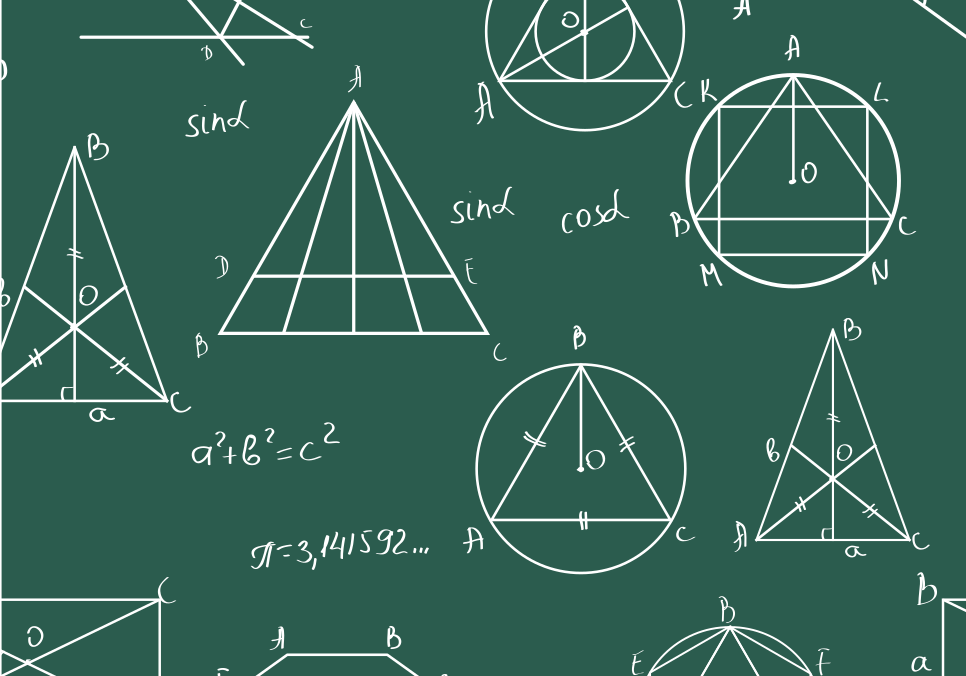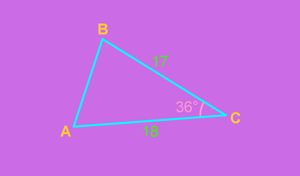Trigonometry is a branch of mathematics that deals with the relationships between the angles and sides of triangles. It is a subject that has its roots in ancient civilizations and has been developed and refined over thousands of years. In this blog, we will explore what trigonometry is, its history, and its importance in various fields.
History of Trigonometry
The origins of trigonometry can be traced back to ancient civilizations such as the Babylonians, Egyptians, and Greeks. These cultures used simple trigonometric functions to measure angles and distances in construction, navigation, and astronomy.
The Greek mathematician Hipparchus is credited with developing the first systematic study of trigonometry in the second century BCE. He is also known for creating the first trigonometric table, which contained the values of the sine function for angles between 0 and 90 degrees.
In the medieval period, Islamic mathematicians such as Al-Khwarizmi and Al-Biruni made significant contributions to the field of trigonometry. They developed new trigonometric functions and expanded the use of trigonometry to fields such as cartography and geography.
During the Renaissance, trigonometry continued to evolve with the work of mathematicians such as Regiomontanus, who introduced the concept of the tangent function. Later, the development of calculus by Isaac Newton and Gottfried Leibniz revolutionized trigonometry, making it an essential tool for the study of calculus and mathematical physics.
Today, trigonometry is used in a wide variety of fields, including engineering, physics, astronomy, and computer graphics.
Fundamental Concepts of Trigonometry
Trigonometry deals with the relationships between the angles and sides of triangles. There are six basic trigonometric functions: sine, cosine, tangent, cosecant, secant, and cotangent. These functions are defined in terms of the ratios of the sides of a right triangle.
A right triangle is a triangle that has one angle measuring 90 degrees. The side opposite the right angle is called the hypotenuse, and the other two sides are called the legs. The ratio of the length of the opposite side to the length of the hypotenuse is called the sine of the angle, denoted as sinθ. The ratio of the length of the adjacent side to the length of the hypotenuse is called the cosine of the angle, denoted as cosθ. The ratio of the length of the opposite side to the length of the adjacent side is called the tangent of the angle, denoted as tanθ.
The reciprocal functions of sine, cosine, and tangent are cosecant, secant, and cotangent, respectively. Cosecant is the reciprocal of sine, denoted as cscθ. Secant is the reciprocal of cosine, denoted as secθ. Cotangent is the reciprocal of tangent, denoted as cotθ.
Trigonometric Identities
Trigonometric identities are equations that relate the trigonometric functions to each other. These identities are used to simplify trigonometric expressions and to solve trigonometric equations. Some of the most important trigonometric identities are:
• Reciprocal Identities: cscθ = 1/sinθ, secθ = 1/cosθ, cotθ = 1/tanθ
• Quotient Identity: tanθ = sinθ/cosθ
• Even-Odd Identities: sin(-θ) = -sinθ, cos(-θ) = cosθ
• Periodic Identities: sin(θ + 2π) = sinθ, cos(θ + 2π) = cosθ
Applications of Trigonometry
Trigonometry has many applications in various fields, such as:
Engineering: Trigonometry is used extensively in engineering to solve problems related to construction, design, and measurement. Engineers use trigonometry to calculate the angles and distances between different points, determine the height of buildings, and design bridges and roads.
Physics: Trigonometry is used in physics to study the behavior of waves and oscillations, as well as to calculate the trajectory of projectiles. It is also used in astronomy to calculate the position and motion of celestial objects.
Computer Graphics: Trigonometry is used in computer graphics to create and manipulate images, animations, and simulations. It is used to calculate the position, orientation, and movement of objects in three-dimensional space, as well as to create realistic lighting and shading effects.
Navigation: Trigonometry is used in navigation to calculate the position and direction of ships, planes, and other vehicles. It is used to calculate the distance and bearing between two points, as well as to determine the altitude and azimuth of celestial objects.
Surveying: Trigonometry is used in surveying to measure and map the earth's surface. Surveyors use trigonometry to determine the angles and distances between different points on the ground, as well as to calculate the elevation and slope of the terrain.
Conclusion
In conclusion, trigonometry is a fundamental branch of mathematics that deals with the relationships between the angles and sides of triangles. It has a rich history, dating back to ancient civilizations, and has evolved over time with the contributions of many mathematicians.
Trigonometry is used in a wide variety of fields, including engineering, physics, astronomy, computer graphics, navigation, and surveying. Its applications are vast and continue to expand as technology advances and new fields emerge.
Understanding trigonometry is essential for anyone pursuing a career in science, technology, engineering, or mathematics. It is a powerful tool for problem-solving and provides a deeper understanding of the relationships between different mathematical concepts.
In summary, trigonometry is a fascinating subject that has many practical applications and continues to be an important area of study in mathematics. Whether you are a student, a professional, or simply someone interested in mathematics, learning about trigonometry can open up a world of possibilities and provide a deeper appreciation for the beauty and complexity of mathematics.

Here are some Frequently Asked Questions (FAQs) about trigonometry:
What is trigonometry?
Trigonometry is a branch of mathematics that deals with the relationships between the angles and sides of triangles. It involves the study of trigonometric functions, such as sine, cosine, and tangent, and their applications in various fields.
What are some real-world applications of trigonometry?
Trigonometry has many practical applications in fields such as engineering, physics, computer graphics, navigation, and surveying. It is used to solve problems related to construction, design, and measurement, as well as to study the behavior of waves and oscillations, calculate the trajectory of projectiles, and map the earth's surface.
What is the history of trigonometry?
Trigonometry has a rich history dating back to ancient civilizations such as the Egyptians, Babylonians, and Greeks. The study of trigonometry continued to evolve over time with the contributions of many mathematicians, including Hipparchus, Ptolemy, Al-Khwarizmi, and Isaac Newton.
What are the basic trigonometric functions?
The basic trigonometric functions are sine, cosine, and tangent. These functions are defined in terms of the ratios of the sides of a right triangle. The sine of an angle is the ratio of the opposite side to the hypotenuse, the cosine of an angle is the ratio of the adjacent side to the hypotenuse, and the tangent of an angle is the ratio of the opposite side to the adjacent side.
How do I use trigonometry to solve problems?
To use trigonometry to solve a problem, you need to identify the relevant angles and sides of the triangle and apply the appropriate trigonometric function. This may involve using trigonometric identities, inverse trigonometric functions, or the Pythagorean theorem.




